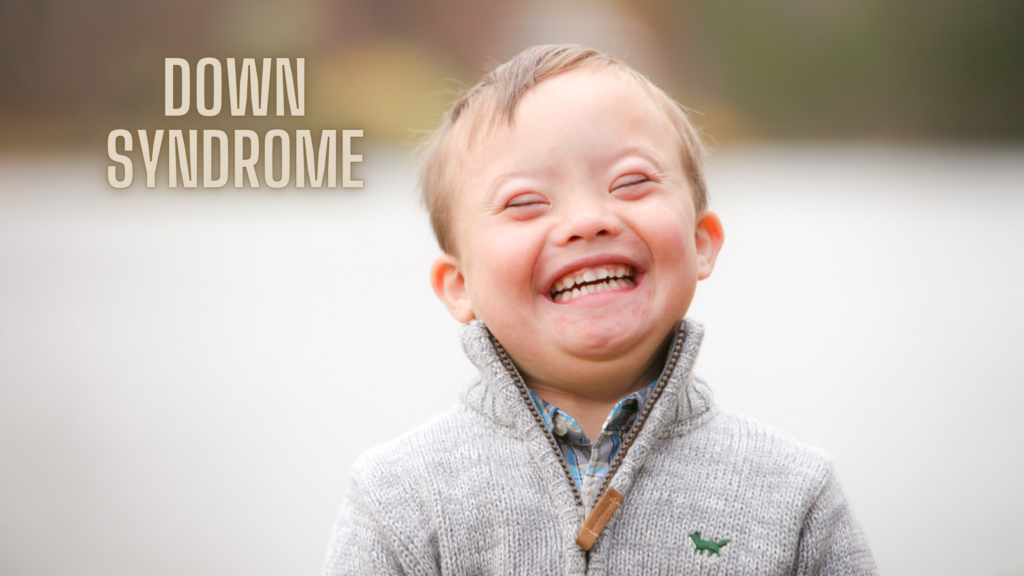🧬 Down Syndrome – Overview
Down syndrome is a genetic disorder caused by the presence of an extra copy of chromosome 21 (also called trisomy 21). It leads to physical growth delays, intellectual disability, and distinct facial features. It is the most common chromosomal condition globally.
🧬 Cause
- Trisomy 21: 95% of cases – the person has three copies of chromosome 21 in all cells.
- Translocation: ~4% – part of chromosome 21 attaches to another chromosome.
- Mosaic Down syndrome: ~1% – mixture of normal and trisomy 21 cells.
🧪 Caused by a random error in cell division, not usually inherited (except in some translocation cases).
👶 Key Characteristics
🔹 Physical Features
- Flat facial profile
- Almond-shaped eyes that slant upward
- Small ears and mouth
- Short neck
- Single deep crease across the palm (simian crease)
- Poor muscle tone (hypotonia)
- Shorter height and broader hands
🔹 Developmental and Cognitive
- Mild to moderate intellectual disability
- Delayed speech and motor development
- Learning and memory challenges
- Strong visual learning and social skills
⚕️ Health Conditions Commonly Associated
- Congenital heart defects
- Hearing and vision problems
- Thyroid disorders (especially hypothyroidism)
- Sleep apnea
- Gastrointestinal issues
- Leukemia (increased risk)
- Alzheimer’s disease (early onset)
🧪 Diagnosis
🔍 During Pregnancy (Prenatal Testing)
- Screening tests: Blood tests + ultrasound (nuchal translucency)
- Diagnostic tests:
- Chorionic villus sampling (CVS)
- Amniocentesis
- Noninvasive prenatal testing (NIPT) – analyzes fetal DNA in mother’s blood
👶 After Birth
- Physical examination
- Confirmed with a karyotype test (chromosome analysis)
🧑⚕️ Management & Support
There is no cure, but early intervention and support greatly improve quality of life:
- Early intervention programs (physical, occupational, and speech therapy)
- Regular medical checkups
- Educational support tailored to individual needs
- Support for families (counseling, community programs)
🛡️ Living with Down Syndrome
- Lifespan: Increased significantly with modern healthcare – many live into their 60s or longer
- Quality of life: Most individuals can lead happy, fulfilling lives, attend school, work, and participate in social activities
✅ Key Points
- Down syndrome is caused by an extra chromosome 21
- Affects physical development, learning, and may cause health complications
- Early diagnosis, therapy, and education are key to development
- Most people with Down syndrome can lead active, meaningful lives
